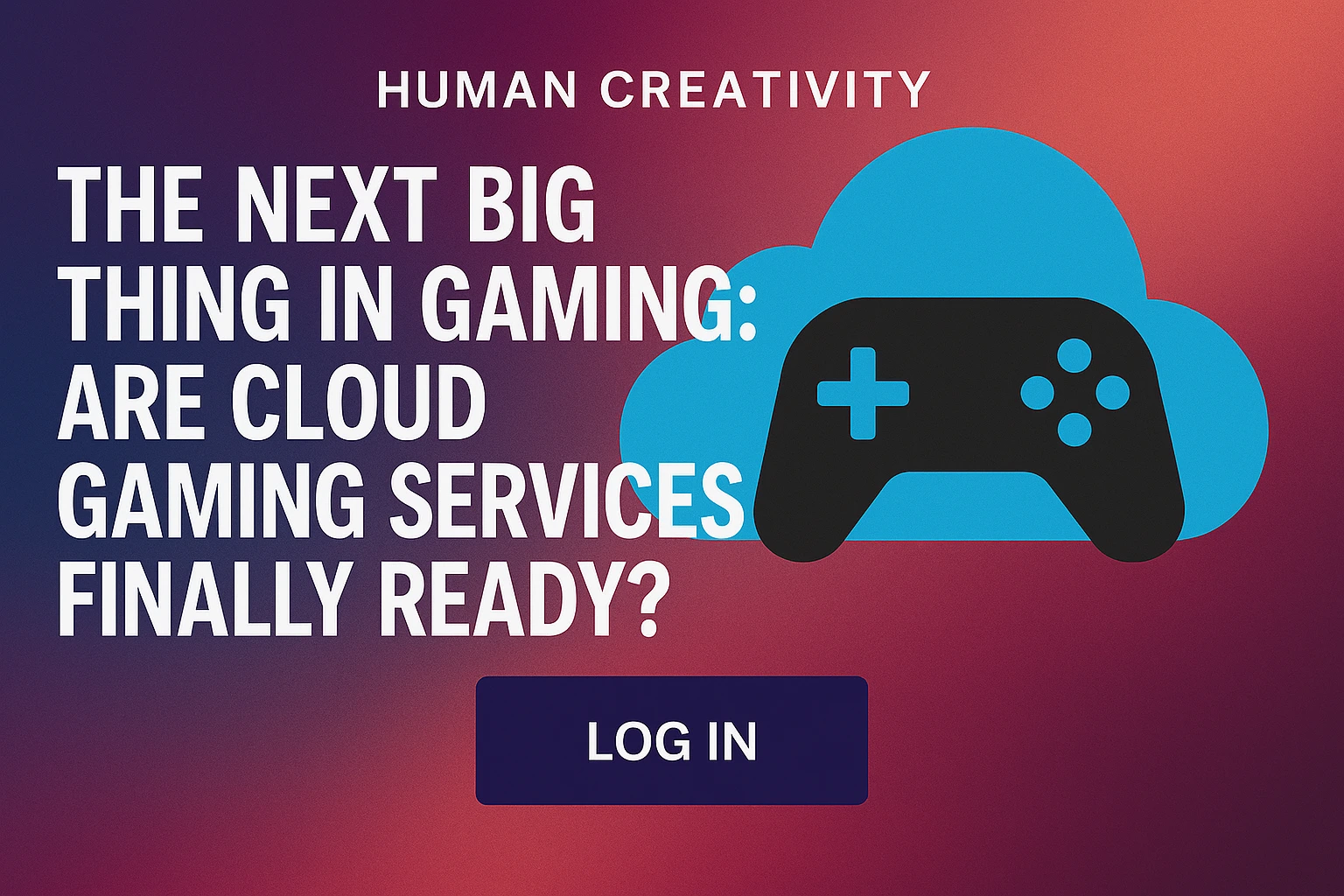For years, high-end gaming has meant one of two things: a hefty investment in an expensive console like a PlayStation 5 or Xbox Series X, or an even more significant investment in a powerful gaming PC. The dream of “cloud gaming”—playing the latest, most graphically demanding titles on any device, from a simple laptop to your smartphone—has always felt just out of reach, plagued by lag and blurry streams.
But in 2025, the landscape has fundamentally changed. The question is no longer if cloud gaming can work, but how well it fits into your life. So, have services like Xbox Cloud Gaming and NVIDIA GeForce Now finally made the expensive black boxes in our living rooms optional?
What is Cloud Gaming, Really?
Think of it exactly like Netflix, but for video games. When you stream a movie, the file isn’t on your device; it’s on a server miles away. Cloud gaming does the same thing. A powerful, high-end server runs the game, processing all the graphics and physics. Your device—be it a phone, a tablet, or a low-powered laptop—simply acts as a screen and a controller. It streams the video feed of the game to you, and sends your button presses back to the server. All of this happens in milliseconds.
The Deal-Breaker: Internet and Latency
Let’s address the elephant in the room: lag, or “latency.” This has always been cloud gaming’s biggest hurdle. While services have improved, your experience is still 100% dependent on your internet connection.
However, it’s not just about speed (Mbps). A stable, low-“ping” (latency) connection is far more important. A wired fiber optic connection is the gold standard. A strong 5GHz Wi-Fi signal is very good. Mobile 5G can be excellent, but is more prone to instability.
For single-player, story-driven games like Cyberpunk 2077 or Starfield, the experience on a good connection is now practically indistinguishable from a local console. For hyper-competitive, fast-twitch shooters like Valorant or Call of Duty, a dedicated gamer will still feel the slight delay.
The Main Contenders in 2025
1. Xbox Cloud Gaming (via Game Pass Ultimate):
- The “Value” King: This is the “Netflix” model. For one monthly subscription, you get access to a library of hundreds of games, including all new titles from Microsoft and Bethesda on day one.
- Best For: Gamers who want a huge, rotating library without buying individual games. It’s the ultimate “try everything” service.
2. NVIDIA GeForce Now:
- The “Power” Play: This service takes a different approach. You play the games you already own on platforms like Steam, the Epic Games Store, and GOG.
- Best For: PC gamers who want to play their existing library on the go, or who want the absolute best performance. The “Ultimate” tier offers 4K resolution and 120fps streaming, performance that rivals (and sometimes beats) a high-end PC.
3. PlayStation Plus Premium:
- The “Catalog” Option: Sony’s offering is primarily focused on streaming its vast back-catalog of PS3 and PS4 games, though some newer titles are available. It’s more of an add-on for PlayStation owners than a true console replacement.
The Verdict: Is It Ready for You?
So, is cloud gaming finally ready? Yes, absolutely.
It may not replace the dedicated enthusiast’s $3,000 gaming rig, but it has unquestionably arrived as a mainstream, viable option. For a low monthly fee, you can access a library of games that would cost thousands to buy and require hardware that costs hundreds.
It’s the perfect solution for casual gamers, families on a budget, or even dedicated players who want a secondary way to play. The ability to continue your save file from Assassin’s Creed on your phone during your lunch break, and then pick it up on your laptop at night, is a magical experience that is no longer a future dream. It’s here.
